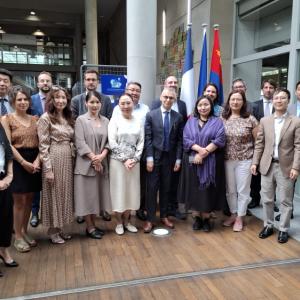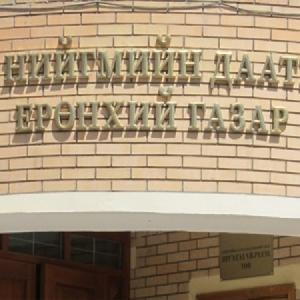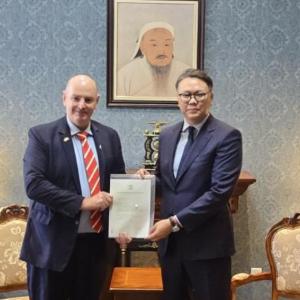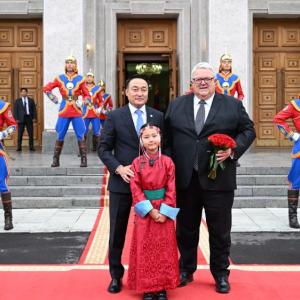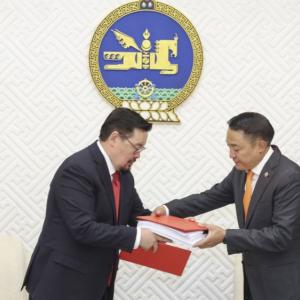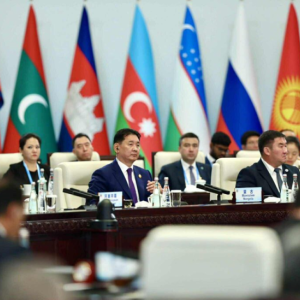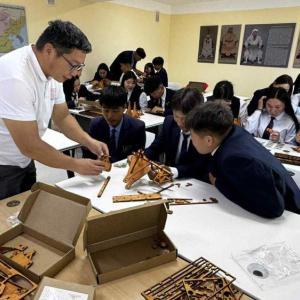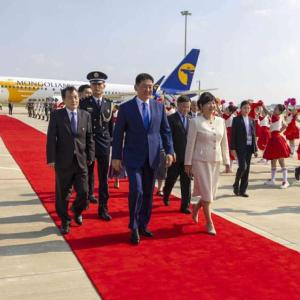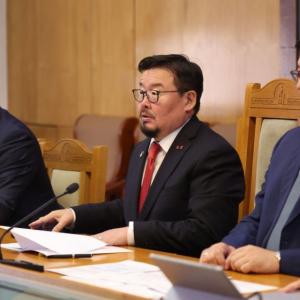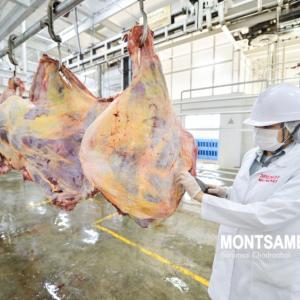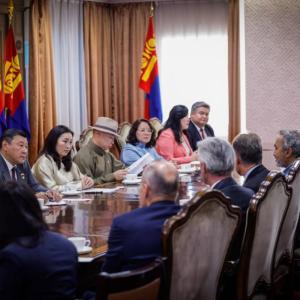‘Gobi Great Six’ initiative aims to protect Gobi ecosystems
The Mongol MessengerSix endangered species to become Mongolian brands
Globally endangered Wild Bactrian Camel, Gobi Bear, Takhi or Wild Horse, Khulan or Wild Ass, and Saiga Antelope, listed as vulnerable Goitered Gazelle are symbols of well-being and health of Gobi ecosystems. Each of those six species plays important and unique roles to the ecosystem. In particular, Khulan or Wild Ass is known for digging holes at dried up river beds and water sources in the Gobi Desert enabling other species to access to water during the hot weather when there is a lack of water.
Despite the fact that it is calculated there are more than 40 thousand wild ass; poaching for its meat and skin occasionally occur which leads to a decline in its population.
In the last several years, the population of Mongolian Saiga Antelope has been decreasing because of a shortage of pasture land and water resource as well as pouching. The reason illegal hunting for Saiga antelope has increased is that their horn is considered to be the most beneficial and highly valuable ingredient in traditional oriental medicine. In addition, usually forming a herd, Saiga Antelopes make hard soils loosen and their faeces fertilizes the Gobi Desert land soils.
To protect the Gobi ecosystems, a home to these species (those are being called, herein, as “Gobi Great 6” or GG6), build partnership platform and empower collaborative efforts of governmental and non-governmental organizations and the public (local communities) into the conservation activities, the Gobi Great Six has been recently initiated.
We often hear of concerns, such as declining populations of Wild Bactrian camel, Wild Ass, Gobi bear, Takhi Horse, Saiga Antelope, and Goitered Gazelle from day to day and they have become ones of the target species in the region. However, no actual progress and achievements are seen in practice. It might be somehow related to inadequate knowledge and understanding on importance and values of these species. Therefore, an event “Gobi Great 6” was organized last September under the campaign “Gobi Great 6” initiated by the WWF Mongolia Program Office (MPO) in order to refill public knowledge gap and revere importance of these endangered species of the Gobi.
Becoming the first of the commitment to protect the six great animals of the Gobi region, the event was dedicated for one of the endangered animals - wild horse or Takhi. A venue of the event was the ‘Takhiin Tal’ (“Steppe of Takhi”), which is historically proclaimed as the land of the last traces of Takhi, or a vacant and unpopulated area of 120 km in radius included in the areas of the Great Gobi Strictly Protected Area part “B”.
The event was attended by over 180 individuals, representing the Ministry of Environment and Tourism, the Institute of Biology of the Academy of Sciences, the Foundation for Gobi Bear Conservation, the Wildlife Conservation Society (WCS), the Mongolian National Broadcasting, the Association for Gobi Khulan Conservation, ‘Khomiin Taliin Takhi’ NGO, National University of Mongolia, the Programme “Steppe Forward” of Zoological Society of London, Hustai National Park, the Centre for Reintroduction of Takhi in Takhi Steppe, the Association for Takhi Conservation (France), the Administration of Great Gobi Strictly Protected Area’s parts “A” and “B”, senior officers and officials from local Citizen’s Representative Khurals, Governor’s Administration Offices, and Environmental and Tourism Departments of Bayankhongor, Gobi-Altai, Khovd, and Zavkhan aimags, and local communities. Researchers and scientists presented importance and values of the six species to raise awareness on the species among the participants. During the event, D.Batbold, Country Director of the WWF Mongolia Program Office (MPO) emphasized that the organizers will wholeheartedly work to make the name ‘Gobi Great Six’ known to the world and to make a world brand.
‘Takhiin Tal Appeal’, one of the key outputs from the event, was unanimously agreed by the participants. Under the appeal, all involving parties including local authorities (the aimags, where the species of “GG6” do inhabit) have made their commitments by proposing their activities.
The document set out a total of 12 parts of commitments, such as improving the legal and regulatory environment on wildlife conservation and sustainable use through the initiative GG6, organizing the public events, festivals, and national campaigns and awareness activities to support the initiative GG6 under the Government custody and through all stakeholder engagement, creating a brand tourism product named after GG6, advancing research and population monitoring surveys of GG6 and their roles in the ecosystem, organize the annual public events such as Open Days, campaigns, training and awareness activities through all stakeholder engagement.
B.Oyundelger
The article is featured in the Mongol Messenger's issue No. 44 for November 4, 2016.

 Ulaanbaatar
Ulaanbaatar













